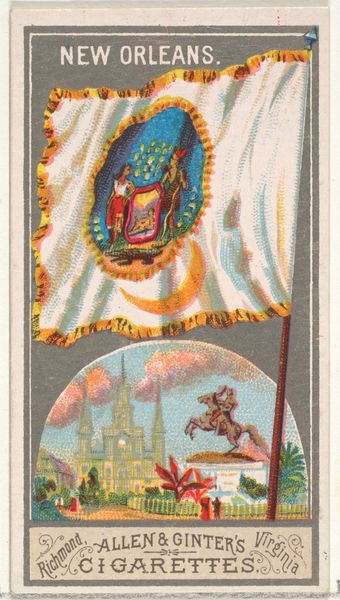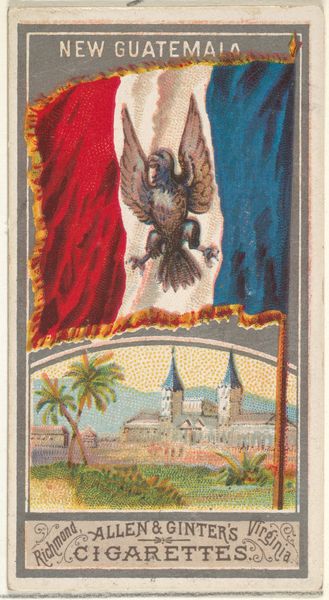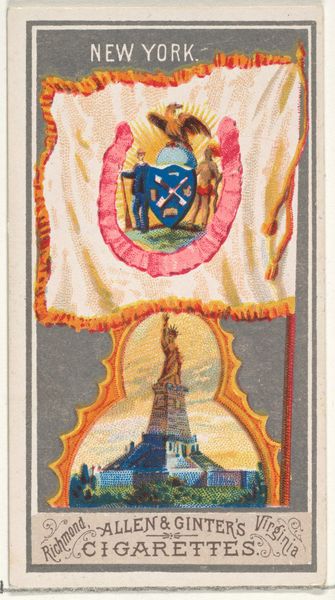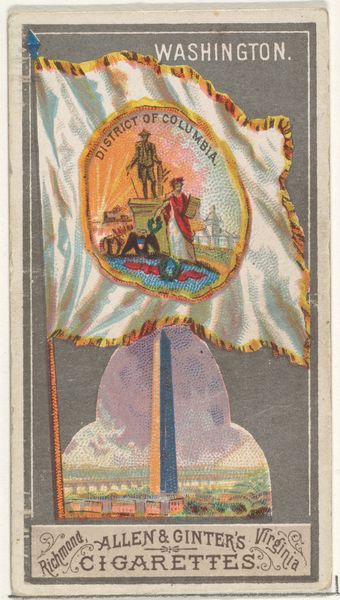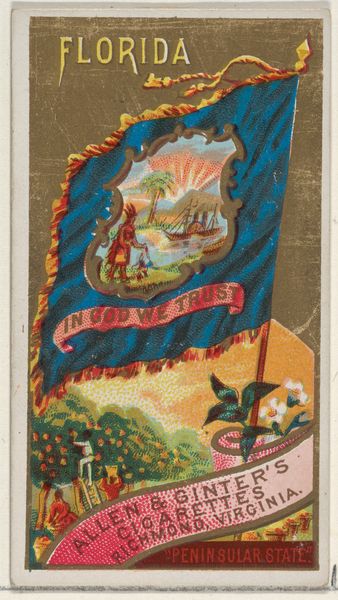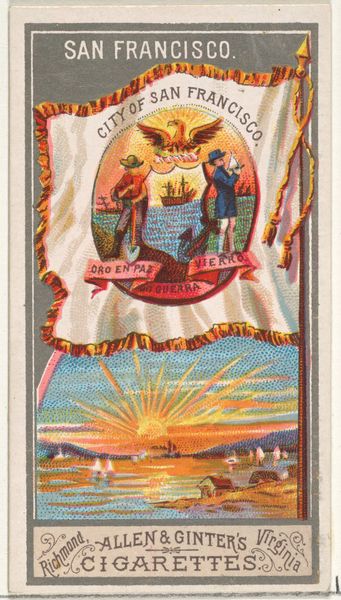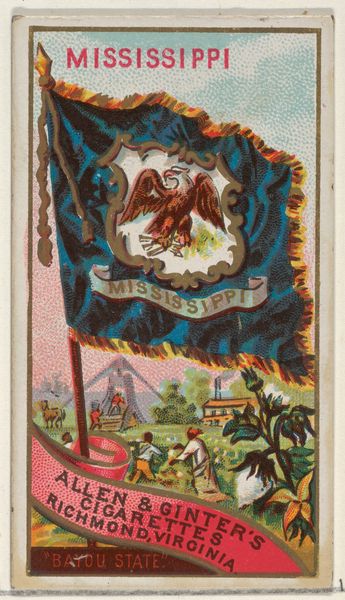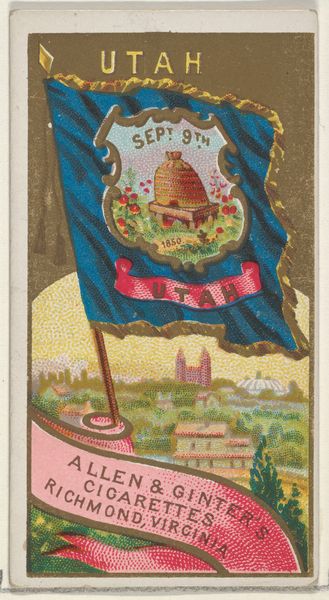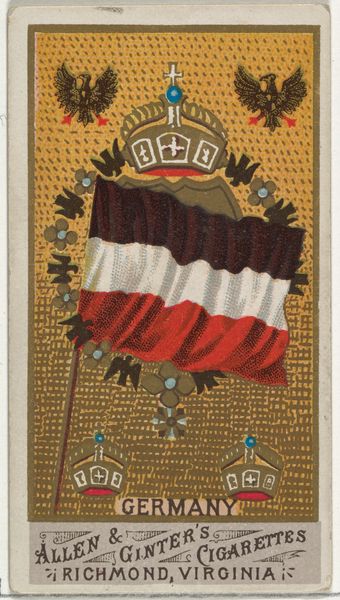
Burma, from Flags of All Nations, Series 2 (N10) for Allen & Ginter Cigarettes Brands 1890
0:00
0:00
drawing, print
#
drawing
# print
#
landscape
#
orientalism
Dimensions: Sheet: 2 3/4 x 1 1/2 in. (7 x 3.8 cm)
Copyright: Public Domain
Curator: This colorful print, dating back to 1890, is titled "Burma, from Flags of All Nations, Series 2," a trade card created for Allen & Ginter Cigarettes. It gives a glimpse into how Burma was perceived at the time. Editor: My first thought is that it feels less like a flag and more like a crest, perhaps an imagined or romanticized symbol of a place. The peacock-like bird immediately grabs your attention, standing out against the neutral tones of the background and the soft, watercolor-like wash of the building. Curator: You’ve picked up on something important. These cigarette cards, part of a series depicting nations across the globe, weren't always concerned with strict accuracy. Allen & Ginter sought to appeal to a sense of exoticism and, dare I say, even to promote a sense of American exceptionalism through displaying different cultures. Editor: And that peacock, or Hintha bird, takes center stage as a representation of pride, perhaps even an assertion of independence. Look how it's posed, its plumage arranged in a halo or solar disk – powerful emblems, each radiating significance. It is important to recognize that in many Eastern cultures the bird signifies renewal and enlightenment, reflecting the idea that the nation could be progressive. Curator: The flag seems oddly limp and lacking dynamism, right? Well, it might reveal a deeper historical context about American society in the 1890s, the rise of global marketing, and the prevailing Western view of other nations, all distilled into this very small commercial package. Its purpose wasn't educational accuracy but brand association. Editor: Despite that flattening, the building below the flag brings a sense of location. I see signs of life: tiny people around what I think is meant to be a large government building? There's a sense of hierarchy here – a structured society conveyed economically through those details. Curator: Yes, and if you look closely, you'll also notice those stylized palms, evoking a simplified version of the exotic landscape for potential consumers in America. It reflects the popular interest in orientalism in the United States at this time. This entire image seems to work more like branding, linking a feeling to a name—'Burma'. Editor: So ultimately, while we may analyze how Burma, the place, may have been regarded, we're left mostly with how Americans may have regarded it during the 1890s? It seems there is a lot hidden within these symbols and their artistic rendering. Curator: Precisely! And perhaps now we see how a small piece of ephemera can be far from simply ‘about’ what it portrays, and much more about who is portraying it and why.
Comments
No comments
Be the first to comment and join the conversation on the ultimate creative platform.
